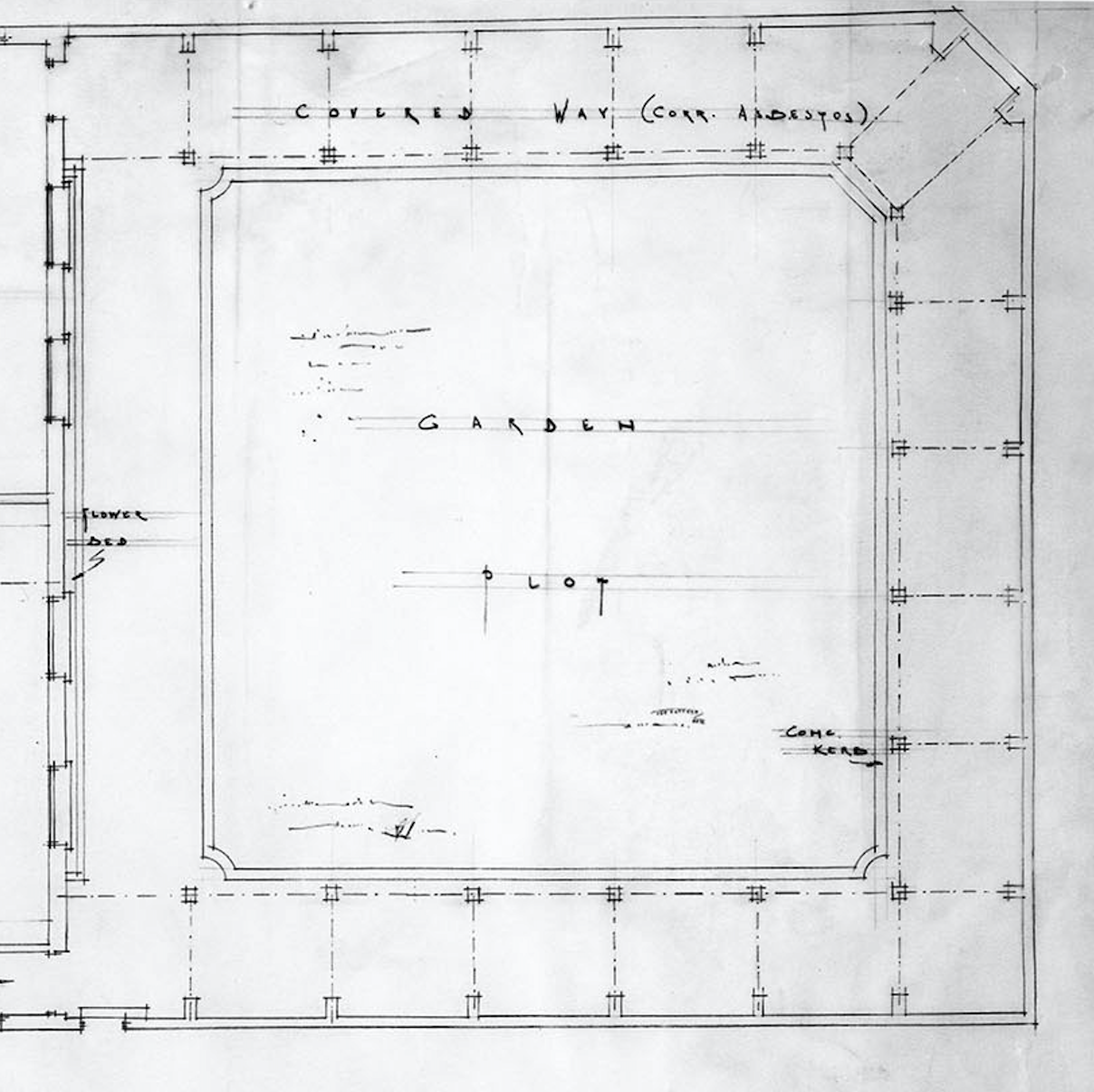“There was bars on the windows and over the walls there was barbed wire and it was kind of like…there was kind of bar…steel bars and in between all them steel bars there was barbed wire……so there was no way that you could actually climb up over the wall. The walls were too high anyway.”
O’Donnell, K., S. Pembroke and C. McGettrick. (2013) “Oral History of Lucy”. Magdalene Institutions: Recording an Oral and Archival History.
Government of Ireland Collaborative Research Project, Irish Research Council, p. 26.
Source: Shaffrey Associates Architects, Conservation Report: Covent [sic] Lands: Sean MacDermott Street Lower, Dublin, 2007. p.18.
It would certainly have been incredibly difficult to stage an escape from this area. In addition to the tall walls (over 4m) reportedly capped with broken glass and/or barbed wire, the cloister’s ‘Covered Way’ noted on the 1954 survey by W.H. Byrne and Son Architects would have made an extremely effective impediment to climbing the walls.
The Cloister was paved over following the 2006 fire, although the perimeter walls still stands mostly intact.
The land which became this recreation ground was purchased by the Sisters of Charity in 1946. Historian Jacinta Prunty writes:
‘After almost a decade of negotiations, a small plot of land adjoinging to Gloucester (Meehan’s) Lane is purchased and used as a recreation ground, ‘laid out with a flower bed and timber seating.’
Jacinta Prunty, The Monasteries, Magdalene Asylums and Reformatory Schools of Our Lady of Charity in Ireland 1853-1973, Dublin: Columba Press (2017) p. 503)





